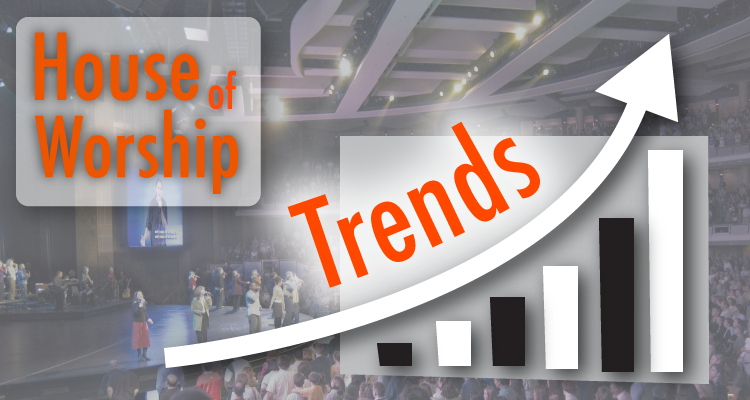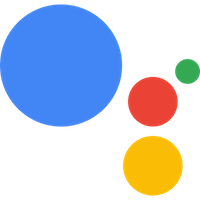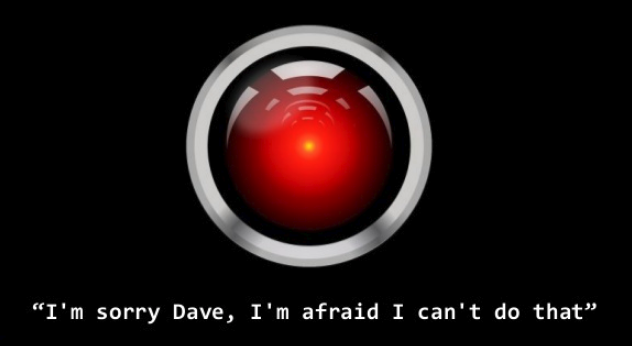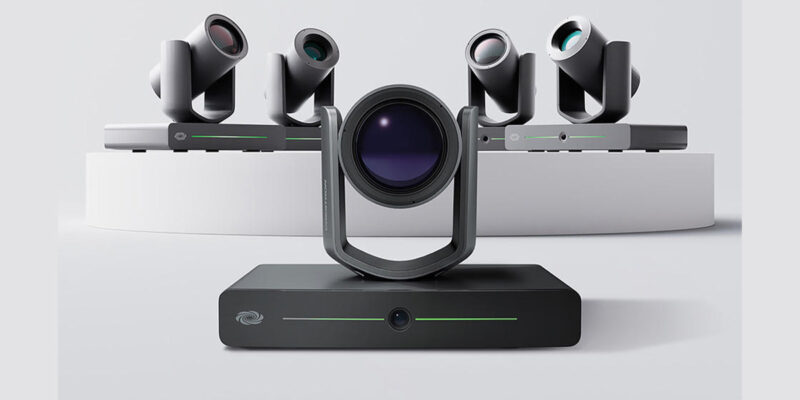Alexa, Manage My Church AV System
 “Alexa, turn on the church audiovisual system.” Clever voice-activated connectivity? Maybe. But practical? Not really.
“Alexa, turn on the church audiovisual system.” Clever voice-activated connectivity? Maybe. But practical? Not really.
“Alexa, show me the upcoming maintenance on all of my audiovisual components, listing them in descending order by date.” Clever? Maybe. But practical? Absolutely.
In the house of worship market, convenience isn’t a key driver for upgrades or new purchases. What does pique buyer interest, however, is when technology is a driver for consistent operation and a decreased total cost of ownership.
Amazon’s Alexa, or Google’s Assistant, or Microsoft’s Cortana, or Apple’s Siri may be a part of these key drivers sooner than later for church audiovisual systems.
For the commercial audiovisual industry, the big game changer today should be voice-activated connectivity because it expands control beyond convenience.
AV Sytems Control Is Not Enough for Voice-Activated Connectivity
The consumer market has long driven technology innovations and price reductions in the commercial audiovisual space, so it should come as no surprise that remote automation and voice control are inevitable no the commercial integration world. However, unlike the casual consumer market, professional applications need a stronger value proposition than clever convenience — an ROI needs to be evident.
Long-time leaders in the automation space are AMX and Crestron, along with other competitors. Of course, the increased proprietary control schemas introduced by manufacturers themselves have also been consistent factors in tying components together into a unified system.
At the center of the target for automation has been control. Turning things on and off, power sequencing and, of course, recalling pre-set settings have been the key drivers for audiovisual system control. Along the way, the automation technology became easier and graphically rich user interfaces (UI) began to apply design thinking for easier operation. But no matter how fancy the interfaces, the purpose of automation was squarely centered on controlling devices.
The future of the Internet of Things (IoT) has brought with it far more than control; it’s brought real-time, conversational interactivity. For example, Alexa offers Flash Briefing, where “Alexa delivers news and content from popular broadcasters, local weather information and more. Some providers have video flash briefings available to play along with the audio on compatible Echo devices.”
Instead of limiting users to control options, the IoT connectivity provides users with real-time feedback and specific, contextually relevant data using voice-activated connectivity.
Control Is Dead; Long Live Control
I think it’s fair to say that Crestron, AMX, and other control/automation systems manufacturers have their work cut out for them. Connectivity — be it Ethernet, Wi-Fi, Bluetooth, IR, RF or even hardwired ports — is on everything today. I’m not saying that control systems are obsolete (today), but I am saying that systems integrators have a significant arsenal of tools (for free) available to them to build fully connected, controlled and automated systems using consumer devices. That’s a game-changer!
For example, Amazon’s Alexa has “skills” — a software developer kit — to build custom control and operational interfacing with pretty much any connected device. There are systems integrators already promoting their ability to tie in commercial control systems to the voice-activated Echo devices. It’s simply a matter of time before there is a published library of commercial audiovisual components and systems available for download, like already exists for consumer systems.


The voice-activated future may look something like this:
“Hey, Google… turn on the youth audio system and play the Jesus Culture playlist .”
“Hey, Google” is the trigger; “turn on” initiates an activity on the hub that powers on all of the necessary devices and sets the correct inputs; “play the Jesus Culture playlist on Spotify” is a playback command for content and the service (Spotify), while “for walk-in” is location zone control for the youth auditorium and foyer at a pre-set decibel level as background music.
But even more useful than that convenience? Try this:
“Alexa… send me an email with the latest operational run-time reports for the church main auditorium systems, along with the estimated dates for lamp replacements on the lighting fixtures.” Imagine the value proposition church leaders will see when they see the possibility of voice-activated connectivity!
I’m Sorry Dave, I’m Afraid I Can’t Do That
We’re still a ways off from 2001: Space Odyssey where we have to wonder if the machines will rebel against us. We’re not that far off from systems using narrow artificial intelligence to learn how to keep us from making dumb mistakes in audiovisual system operation.

The opportunity for both manufacturers and systems integrators is wide open for moving beyond control and functional operation from touchpanels or web browsers.
Once again, the consumer space is driving innovation; the question is if your leaders will be smart enough to know how close to obsolescence they are if they don’t drive innovation in this direction as soon as possible.
What say you? Share your views and links in the comments below.





